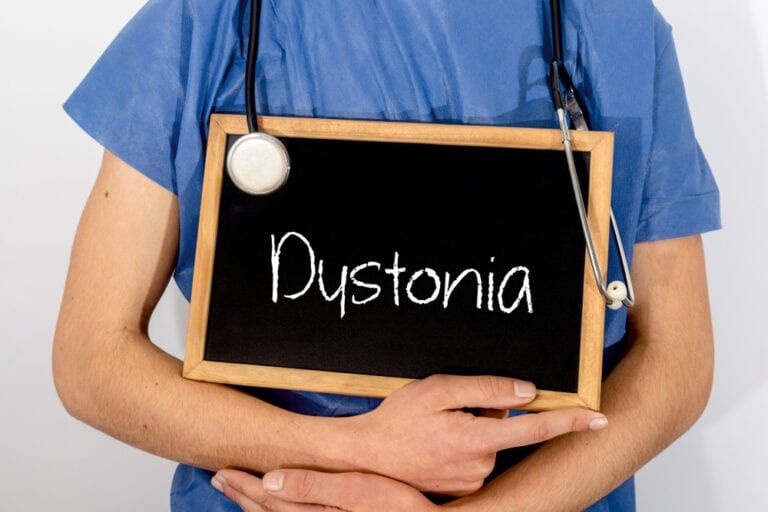Background:
Dystonia is a movement disorder in which a person’s muscles contract uncontrollably. The contraction causes the affected body part to twist involuntarily, resulting in repetitive movements or abnormal postures. Dystonia can affect one muscle, a muscle group, or the entire body. Dystonia affects about 1% of the population, and women are more prone to it than men.
Signs and Symptoms:
Symptoms of dystonia can range from very mild to severe. Dystonia can affect different body parts, and often the symptoms of dystonia progress through stages. Areas of the body that can be affected include:
Neck (cervical dystonia): Contractions cause your head to twist and turn to one side, or pull forward or backward, sometimes causing pain.
Blepharospasm: Rapid blinking or involuntary spasms cause your eyes to close (blepharospasms) and make it difficult for you to see. Spasms usually aren’t painful but might increase when you’re in bright light, under stress or interacting with people. Your eyes might feel dry.
Jaw or tongue (oromandibular dystonia): You might experience slurred speech, drooling, and difficulty chewing or swallowing. Oromandibular dystonia can be painful and often occurs in combination with cervical dystonia or blepharospasms.
Voice box and vocal cords (spasmodic dystonia): You might have a tight or whispering voice.
Hand and forearm: Some types of dystonia occur only while you do a repetitive activity, such as writing (writer’s dystonia) or playing a specific musical instrument (musician’s dystonia).
What Causes Dystonia?
The exact cause of dystonia isn’t known. But it might involve altered nerve-cell communication in several regions of the brain. Some forms of dystonia are inherited.
Dystonia also can be a symptom of another disease or condition, including:
- Parkinson’s disease
- Huntington’s disease
- Wilson’s disease
- Traumatic brain injury
- Birth injury
- Stroke
- Oxygen deprivation or carbon monoxide poisoning
- Infections, such as tuberculosis or encephalitis
- Reactions to certain medications or heavy metal poisoning
How Is Dystonia Treated?
There are several options for treating dystonia. The doctor will determine the course of treatment based on the type of dystonia and its severity.
Injections of botulinum toxin (Botox, Dysport, Xeomin) into specific muscles might reduce or eliminate your muscle contractions and improve your abnormal postures. The injection needs to be repeated about every three months. Physical therapy or occupational therapy or both to help ease symptoms and improve function.
Dr. Kashouty is a leading expert on the treatment of dystonia. He believes in using all possible tools in managing symptoms. The goal is to find the right personalized treatment for each person with dystonia to improve the quality of life.

Resources:
https://www.webmd.com/brain/dystonia-causes-types-symptoms-and-treatments#1




